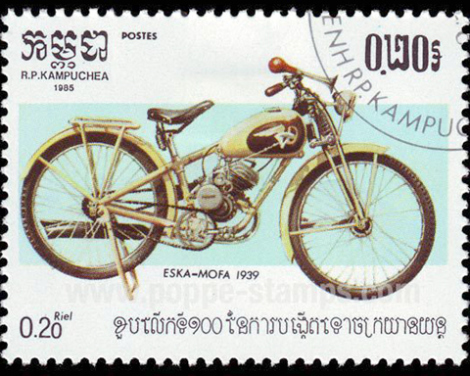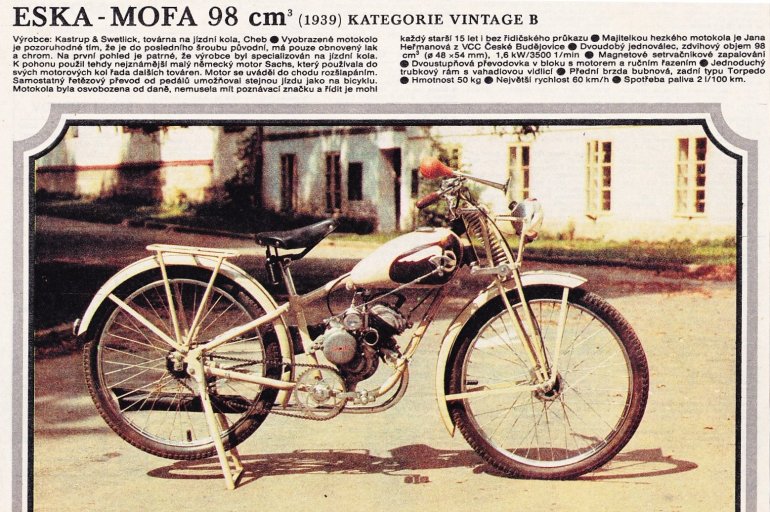|
A little of the history of the Es-Ka company from bicycle web site:- www.oldbike.eu
Probably the most famous manufacturer of bicycles in the Czech Republic, mainly because the company was in existence for a long time. Its founders, Opava Slezan Ambros Swetlik and German Heinrich Kastrup, were originally employed by Cheb Premier, a well-known manufacturer of bicycles, prams and (mainly) motorcycles.
But, in 1911, they decided to set up on their own. Their new factory - which was at first called ’Elite’ - took several employees from Premier and started with the production of bicycles. By 1914 they produced 21,000 and also introduced a model with an auxiliary motor. Around that time, the company renamed themselves Es-Ka, from the phonetic sounds of the founders’ names: Es - Swetlik, KA - Kastrup.
When Fichtel & Sachs introduced their 74cc auxiliary engine, Es-Ka brought out lightweight motorcycles using this powerplant. In 1935 they began to produce small motorcycles called ‘Eska Mofa’ (Motorfahrrad) with the uprated 98cc Fichtel & Sachs engine. The bike weighed 50kg and drove 60 km/h. The body was designed separately, ie: it was a strengthened bicycle frame with girder forks, as you can see in the illustration below, in a Cambodian postage stamp featuring an 1939 model.
 |
As in other European countries, such vehicles were exempt from tax and driving license, so they became very popular.
Swetlik and Kastrup also set up a cycle factory in 1922 in Rokycany called ‘Tripol’. František Hering joined them as a partner. Eska components were used, and motorcycles were also manufactured. Around 1925 a 250cc Villiers-powered motorcycle was planned but did not go into production. In 1935, there was some form of tie-up with Achilles.
The two inseparable friends Swetlik and Kastrup died in 1932 and 1930 respectively. The Tripol company changed its name to Velo Tudor in 1934.
Most of the original Czech bicycle manufacturers moved into motorcycle production in one way or another, most of them by fitting auxiliary engines. The license and registration exemptions for auxiliary-powered bicycles made them much more popular in Europe than in Great Britain. The excellent set-up provided by Fichtel & Sachs helped motorcycle and bicycle manufacturers throughout Continental Europe build and market lightweight motorcycles powered by their engines but badged by the individual companies. |





